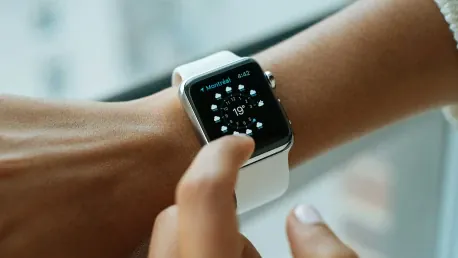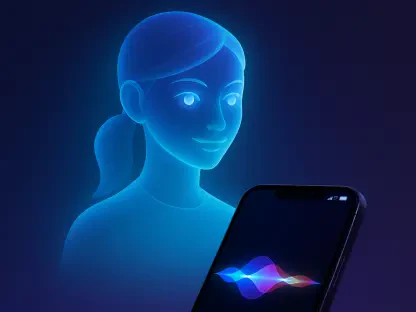As the Apple Watch continues to evolve, its potential integration of advanced artificial intelligence and the addition of a camera form a focal point of industry speculation and anticipation. These advancements could transform the Apple Watch into a more dynamic and multifunctional device, offering unprecedented features and user experiences. The intriguing prospect of a smartwatch that not only tracks health metrics but also leverages AI and visual inputs to provide highly context-aware functionalities is both exciting and challenging. Skeptics and proponents alike debate the practicality and timeliness of these rumored enhancements, shedding light on the complexities of evolving wearable technology.
The Role of AI and Camera in the Future Apple Watch
The integration of artificial intelligence into the Apple Watch is set to revolutionize the wearable technology landscape, granting the device capabilities that far exceed its current functionalities. Particularly significant is the rumored addition of a camera, which aims to provide visual context for AI, enabling the identification of objects in the user’s immediate environment and enriching interaction through related queries and responses. This development seeks to position the Apple Watch not merely as a timepiece or health monitor but as a sophisticated, multimodal intelligent assistant, a feature that may attract new user demographics.
Despite the potential benefits, the addition of a camera to the Apple Watch has faced skepticism. Detractors argue that the practicality of a camera on a smartwatch is questionable, considering factors like user convenience and the platform’s limited real estate for high-quality imaging. The traditional view holds that photography is better suited to smartphones and dedicated cameras. However, the primary argument for this feature lies in its use for AI, rather than conventional photography. Unlike devices such as the Humane AI pin and Rabbit R1, which struggled due to being standalone gadgets with unfamiliar interfaces, the Apple Watch already possesses a well-established user base and a diverse array of functionalities, positioning it favorably for such advancements.
Challenges in AI Integration and the Current State of Siri
One of the primary hurdles facing the Apple Watch’s evolution into a leading AI device is the delayed implementation of an advanced AI model, particularly concerning the Large Language Model (LLM) version of Siri. Initially expected to debut earlier, its rollout is now projected to span 2026 to 2027. This delay poses significant challenges, as timely development of robust AI capabilities is crucial to realizing the full potential of the Apple Watch’s transformation. However, there are interim solutions, like integrating existing AI tools such as ChatGPT, which could offer temporary enhancements and maintain user engagement until the advanced version is ready.
The protracted development timeline for LLM Siri has sparked a mix of anticipation and concern. Users eagerly await the upgrades promised by the integration of advanced AI, yet the delays create a risk of losing momentum in the rapidly evolving technology market. Apple’s decision to bring in new leadership, exemplified by Mike Rockwell, the visionary behind Vision Pro’s development, signals a proactive approach to addressing these challenges and underscores the company’s commitment to its AI ambitions. However, timely execution remains critical, and any further delays could hamper the Apple Watch’s competitive edge in the wearables market.
Market Position and Strategic Adjustments
Despite the potential setbacks, the Apple Watch’s strong market position provides a valuable foundation for its future as an AI-driven device. The existing popularity and user base afford a significant advantage, allowing Apple to leverage extensive user data for refining AI functionalities and enhancing user experiences. Furthermore, Apple’s strategic moves, including recent leadership changes in the AI department and addressing legal challenges, reflect its determination to navigate the complexities of AI integration. The lawsuit alleging false advertising of AI capabilities on the iPhone 16 has only heightened scrutiny and exerted additional pressure, making successful implementation all the more crucial.
Apple’s proactive stance in addressing these hurdles and refining its approach signifies its dedication to maintaining its reputation and delivering on its promises. The company’s vast resources, technological expertise, and established ecosystem create an environment conducive to overcoming developmental delays. Continued innovation and strategic adjustments are likely to play pivotal roles in the Apple Watch’s evolution, potentially allowing future iterations to feature advanced AI and camera capabilities, contributing to a more holistic and engaging user experience.
Conclusion: Potential and Obstacles
As the Apple Watch continues to progress, industry buzz centers on its potential incorporation of advanced artificial intelligence and a built-in camera. These improvements could elevate the Apple Watch to a new level, making it a more versatile and multifunctional gadget with innovative features and user experiences never seen before. The exciting idea of having a smartwatch that not only monitors health metrics but also utilizes AI and visual data to offer highly context-aware functionalities captures the imagination. However, the practicality and timing of these speculated upgrades are hotly debated among both skeptics and supporters, highlighting the complexities in the advancement of wearable technology. While some see it as the next logical step in tech evolution, others question whether these additions are necessary or premature, adding another layer to the conversation around the future of smartwatches and their role in our daily lives.









